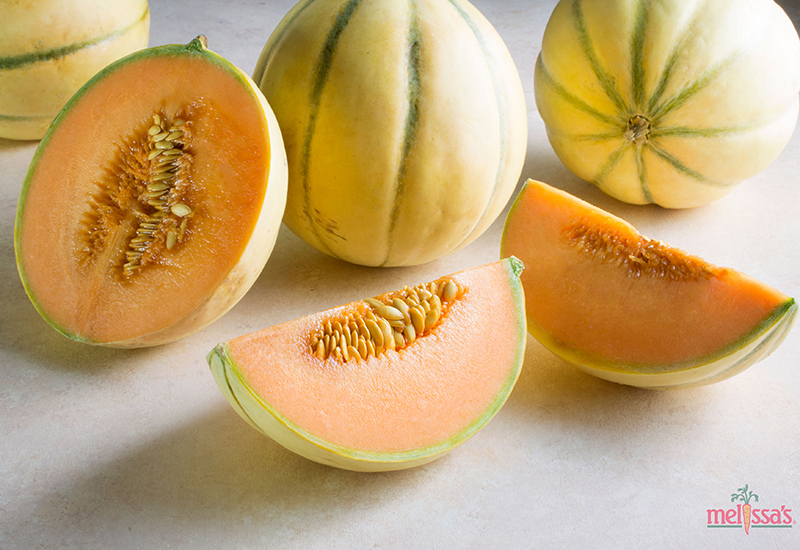5 Tips for Picking the Perfect Charentais Melons

This post and photography were provided courtesy of our friends at Melissa’s Produce.
A true French cantaloupe that originated in Poitou-Charentes region of France in 1920, the Charentais melon is a fragrant star of the European cantaloupe family and, at its best, is far more succulent than the North American cantaloupe. In fact, the North American cantaloupe is technically a muskmelon and its netted rind quickly differentiates it from the skin of the Charentais Melon.
Melissa’s Charentais Melons are grown in the province of San Pedro de Macorís, on the way to the sunny beaches of the south-east part of the Dominican Republic, on a farm located in an area of more than 740 acres of land, among numerous fields of sugar cane.
The vast acreage allows the farm to properly rotate plantings and guarantee yearlong production of these delicious fruits.
Considered by many to be the most divine and flavorful melon in the world. These wonderfully fragrant, round melons mature to a creamy gray color with faint ribs complete with a sweet, juicy, orange flesh.
Typically the size of a grapefruit, these melons weigh anywhere between 2 and 2.5 pounds, which makes them perfect for sharing with friends, family and guests. These world-renowned sweet treats are now available in your Heinen’s Produce Department. If you’re looking to give one a try, be sure to follow our simple steps for picking the perfect Charentais Melon.
How to Choose a Charentais Melon
- Look at it: A melon should have beautiful, clean skin veering towards a pale gold, with blush-green striped marking its segments.
- Pick it up: A melon should be heavy, filled with sweet juice and flesh.
- Examine its “Tail”: The stem end of the melon should be thick and green, indicating that the melon has been picked within the last few days. A circular crack should show around the stem, from which you should find a few drops or two of dark-red, crystallized juice. This is a sure sign of a well-ripened, sweet melon.
- Take a Deep Sniff: The stem end should smell nothing less than divine!
- Now Change Ends: Legend has it that the bigger the blossom end of the melon, the better. The large blossom end is the result of dried flower remains rubbing against the melon, which stimulates its defense system and produces a tastier fruit.


